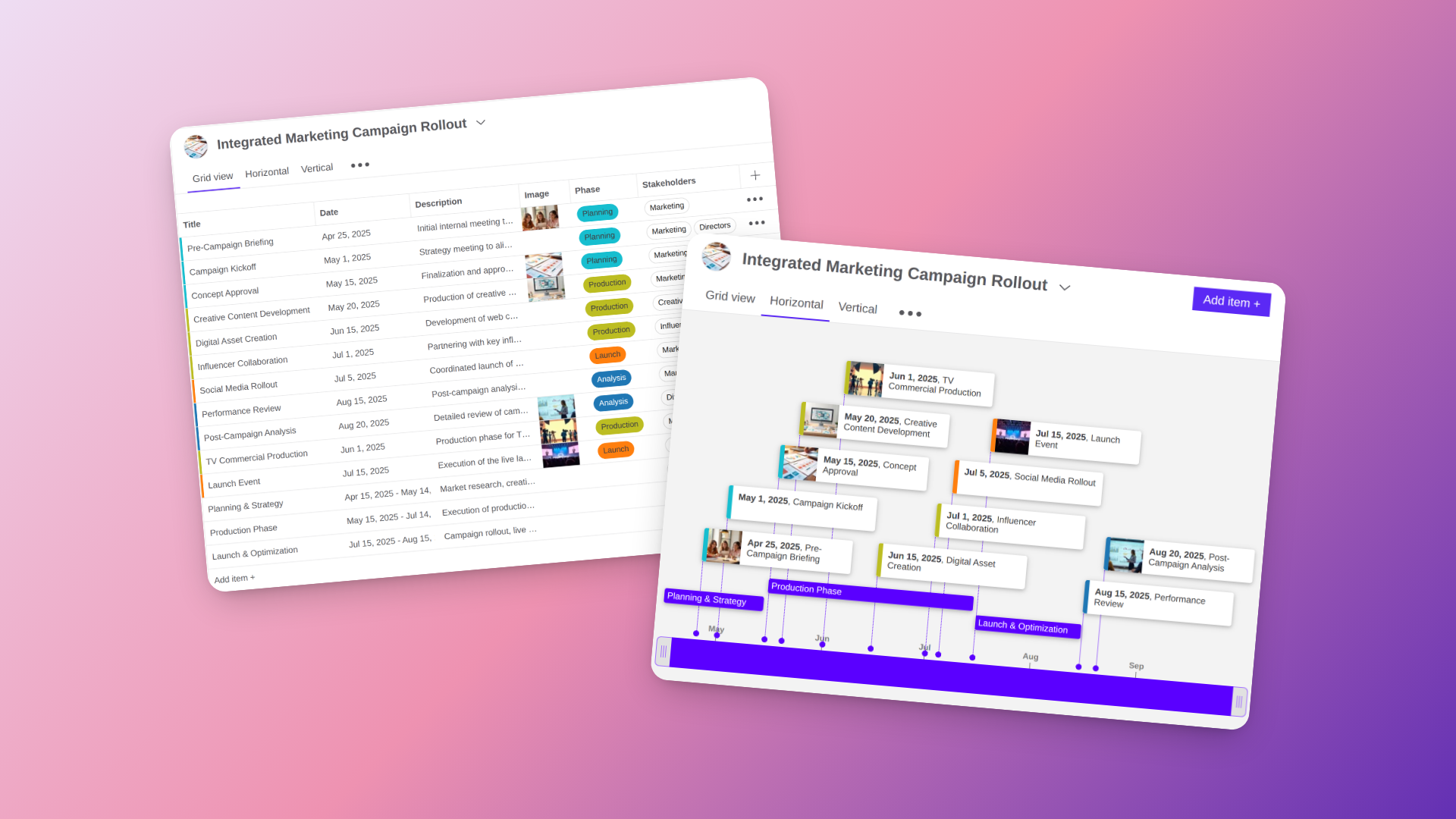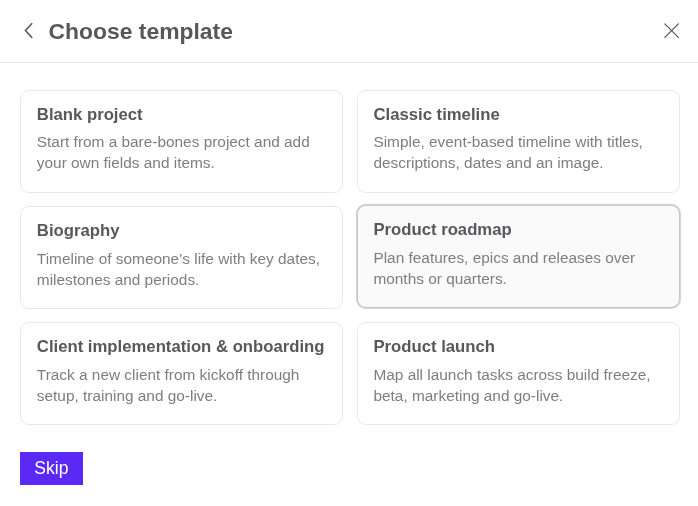Timetoast Unbound is now available on the free plan
Timetoast Unbound is now available on the free plan. Try custom fields, grid editing, color-coding, timeline views and a more private sharing model in Timetoast.

Timetoast Unbound started as a new way to build timelines in Timetoast, focused on projects, roadmaps, and richer data.
Until now, it’s only been available on paid plans. As of today, Unbound beta is also available on the free plan, so every Timetoast user can try it out.
Unbound is the future of Timetoast, and over time it will become the standard way to create new timelines. This post explains what that means, how Unbound differs from Classic timelines, and what’s coming next.
What is Timetoast Unbound?
Timetoast Unbound is a project-style timeline experience that gives you more control over your data and how you work with it:
- Custom fields so you can decide which pieces of information matter for your project
- Grid view, a spreadsheet-like editor for faster editing and sorting
- Horizontal and vertical timeline views for visual planning
- Color-coding and select fields to group, filter and highlight items at a glance
You can read more about the feature set and who it’s for on the Timetoast Unbound page

How Unbound is different from Classic timelines
Timetoast Classic has always been great for stories, school projects and simple biographies. You pick a title, add events, publish, and you’re done.
Unbound takes a different approach:
- Instead of fixed fields, you define your own custom fields to best fit your project
- You work with your data in a grid, then switch to horizontal or vertical views when you want the bigger picture
- Color-coding, select fields, and filters help keep complex projects readable
There’s also an important shift in how publishing works. Classic timelines are based on publishing a public page to the Timetoast site. Unbound moves to a more private, project-based model where you control who sees what. That fits both team usage and classrooms better, where privacy matters.
From this point on, we’re focusing new feature development on Unbound. Classic timelines will continue to work and will still receive maintenance and fixes, but new features will land in Unbound first.
Why we're opening Unbound to free users
Unbound is where Timetoast is headed. Over time, it will become the default for new timelines, and eventually the only way to create new ones.
Opening Unbound on the free plan means:
- You can try the new project-style experience without changing plan first
- You can decide when it makes sense to move new work to Unbound, while keeping existing Classic timelines as they are for now
- We can gather more feedback from a wider group of users so we can keep improving Unbound
If you’ve been curious about Unbound but haven’t used a paid plan, this is your chance to see how it fits your timelines.
Limits on the free plan
Unbound on the free plan comes with limits on things like the number of projects, items, and fields. The goal is to let you run real projects and tests, while keeping larger or team-heavy usage on paid plans.
You can always see your current limits and usage on the updated subscription page inside Timetoast, just go to your account's subscription section. If you outgrow the free limits, upgrading will lift those caps so Unbound can handle bigger projects and you can start collaborating with others.
Timeline templates to get you started
To make it easier to start in Unbound, we’ve added templates that set up fields, views, and basic structure for you. You can, of course, still start from a clean slate.
Current templates include:
- Classic timeline
Simple, event-based timeline with titles, descriptions, dates and an image. This should feel familiar to users of Classic Timetoast. - Biography
Timeline of someone’s life with key dates, milestones and periods. - Product roadmap
Plan features, epics and releases over months or quarters. - Client implementation & onboarding
Track a new client from kickoff through setup, training and go-live. - Product launch
Map all launch tasks across build freeze, beta, marketing and go-live.

You can browse the overview of our timeline templates and then pick a template directly when you create a new Unbound project.
If you’re curious about how Unbound has evolved over the last months, the Timetoast Unbound tag on the blog collects earlier posts about fields, filters, color-coding and more.
A more privacy-focused publishing model
For many years, Classic timelines have followed a simple model: you publish a timeline to the Timetoast site and share the public link. That works well for some use cases, but it’s not always ideal for internal projects or classrooms. It certainly felt right when we first launched, but as we've grown we realized it didn't work for everyone.
Unbound introduces a more privacy-focused approach:
- Projects feel more like private workspaces by default
- Sharing is about inviting people to a project or sharing a specific view, rather than publishing everything as a public page
- This model works better for teams, and for teachers who don’t want student work to appear in a public gallery
If you’re using Timetoast in a school or with client work, this new model should feel more natural.
What we’re working on next
Opening Unbound to free users is part of a bigger shift. Over the coming months, we’ll be working on:
- Improving the projects dashboard so it’s clearer which timelines are Classic and which are Unbound
- Expanding the Help Center with more Unbound help articles
- Adapting the website content to reflect the latest updates
- Smoother day-to-day use, including small quality-of-life improvements wherever the experience feels awkward (please tell us when you spot those corners)
- Bringing editing into the horizontal timeline, so you can adjust dates and fields directly from that view
- A future path to import Classic timelines into Unbound, so you can move important timelines over when the time is right
If you see anything that feels clumsy or confusing while using Unbound, please tell us. The small things add up, and this is the right moment to smooth them out.
If you’re currently using Classic
If you already have Classic timelines, you can continue to access, edit and share them as usual.
What we recommend:
- Keep using Classic for timelines that already work well for you today
- Try Unbound for your next project, course, or campaign, especially if you want custom fields, color-coding, or more flexible views
- Over time, plan to use Unbound for new work, while we build an import path for older timelines that you want to bring across
Right now, both Classic and Unbound are available, but Unbound is where new features and improvements will go from here.
Try Unbound and tell us what you think
To try Unbound on the free plan:
- Sign in to Timetoast
- Go to your dashboard and add a new timeline, selecting Unbound timeline
- Pick a template, or start from a blank project
- Add a handful of items in the grid, then switch over to horizontal or vertical view
You can learn more on the Timetoast Unbound page and browse the new timeline templates to see which fields are included in each one.
As always, we’d love to hear how it feels in real use. If you run into limits that don’t make sense, see awkward behavior in the interface, or have ideas that would make Unbound better for your team or classroom, please reach out via the Help Center or our contact page.

